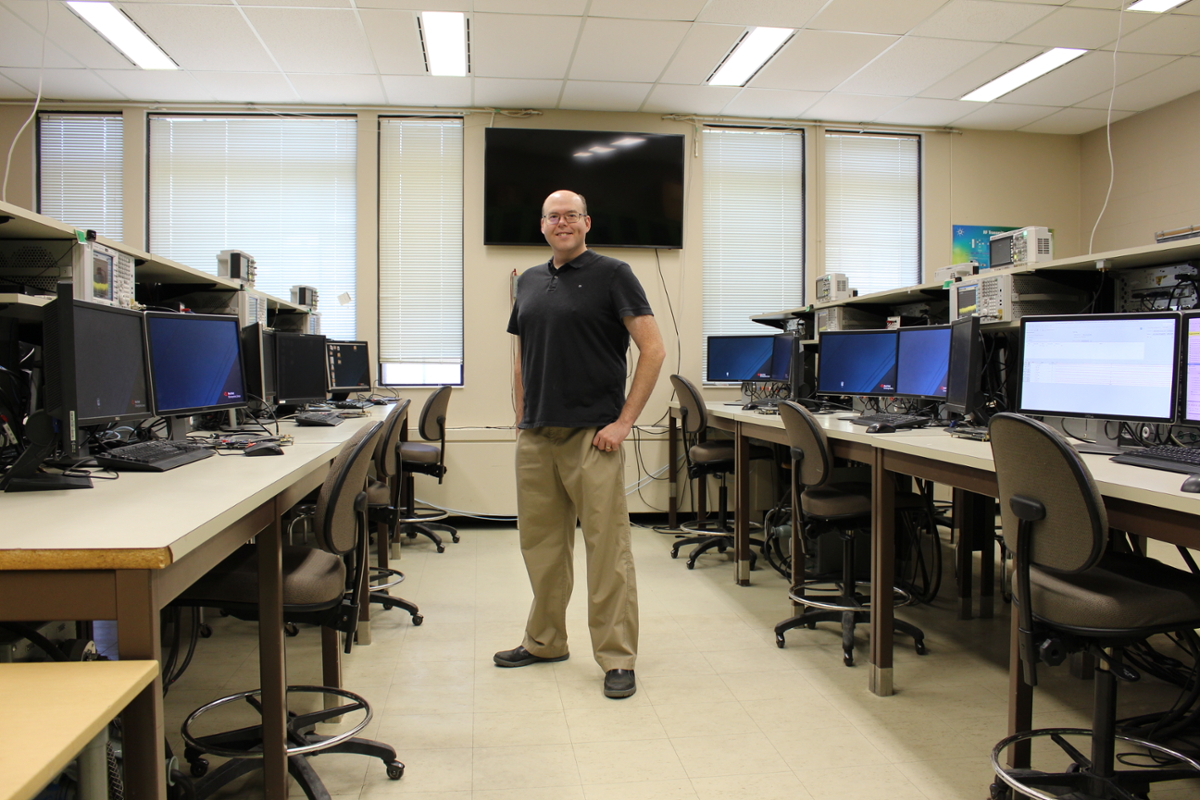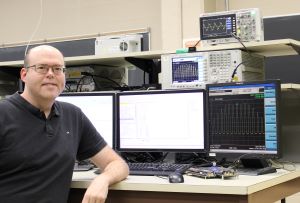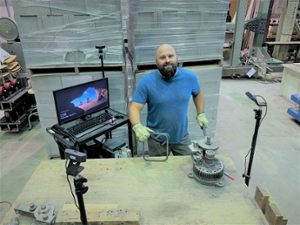
Engineering labs go virtual
The University of Saskatchewan (USask) College of Engineering is developing innovative ways to give their students virtual alternatives to a traditional hands-on lab experience.
By Greg BaskyThe labs and other practical learning experiences that form a major part of the USask Engineering curriculum serve an important function in helping students establish their engineering judgement. Little wonder industry leaders regularly applaud the program for the practical, problem-solving engineers that it sends out into the workforce.
So how do you deliver that same hands-on learning experience your program is recognized for, when in-person instruction has been shelved by a global pandemic? Why, you turn the problem over to a bunch of engineers. Over the summer months, the college’s professors, lab technicians, and departmental assistants have applied equal parts innovation, teamwork, and sheer determination to address the challenge. Here are some examples of their creative solutions.
Digital signal processing for communications

After exhausting all options for enabling students to remotely access special circuit boards called DE2 (Development and Education) boards, Professor Eric Salt says he was thrilled when donors stepped in to cover the $25,000 cost of purchasing boards for all 54 third-year students. The boards, along with two other instruments, are required to complete labs for the department’s Digital Signal Processing classes.
Students also need access to a spectrum analyzer, a piece of equipment worth about $15,000. The manufacturer has provided Salt and colleagues with software that will enable students to use their laptops to remotely control the buttons on the analyzer and also read the instrument’s display screen. One last key piece of equipment - the oscilloscope - is proving to be a bigger challenge, as the software that allows them to be controlled remotely runs on the Windows operating system, but computers in their lab use Linux. At this point, Salt is planning to have a technician videotape himself doing the lab and show the oscilloscope screen on the video.
Salt says developing the virtual alternatives was a team effort. "It was a long two months that we battled until we finally said this is what we’re going to do," says Salt. "We are just trying to get the experiences as good as possible for the students."
Chemical Engineering
When Majak Mapiour and colleagues in the Department of Chemical and Biological Engineering piloted a series of pre-lab videos for Chemical Engineering Lab 1 last year, they had no way of knowing that they were doing a practice run for delivering labs online in Fall 2020. The instructional videos proved to be a hit with students, enabling them to hit the ground running when they walked into the lab, ready to start running the equipment themselves. "They’ve seen what valves to open, how to run the instrument, how to get the data, what kind of data they’re looking for," says Mapiour.
In addition to longer, more detailed prelab videos, this fall's online version of the lab itself will feature a live video feed, with a camera set up in front of the equipment, and a technician there to carry out instructions from groups of two or three students. Mapiour compares it to engineers in a company’s head office directing their people in the field. "It's going to be fully live, fully hands on, minus the actual touching of the equipment."
Mapiour and colleagues have shared their learnings about what worked and didn't work through a series of college-wide sessions involving professors, technical staff, and instructors, hosted by facilitators from Gwenna Moss Centre for Teaching and Learning.
Design in reinforced concrete

In years past, Civil Engineering students taking CE 418 have rolled up their sleeves to construct a pair of concrete beams. When Professor Lisa Feldman and her technician Brennan Pokoyoway were brainstorming ways to deliver this same lab experience virtually, they decided to try an interactive, hands-on approach. "It's just that I’ll be their hands," says Pokoyoway.
Over the course of the semester, students working in groups of five will be calling the shots - over Webex - as Pokoyoway executes their instructions step by step, to bend reinforcement into stirrups, assemble the reinforcing cage and formwork for each beam, place the reinforcing cages into the forms, then fill them up with concrete to create the two beams. "They'll tell me what measurements to take, where to line things up."
Feldman says that, while the exercise is relatively straightforward in theory, she is eager to see how it plays in practice. "I think the first instruction or two from each student is going to be way too vague. Brennan will follow their instructions literally, so long as it doesn’t pose a safety risk."
If nothing else, the virtual version of the lab will teach students proper communication, says Feldman, something that's critically important in engineering, whether you're writing specifications for a job or putting information on design drawings.
Survey Camp
In August students starting their third year of Engineering will work through pre-recorded virtual labs designed to mimic the hands-on experience they would have received in survey camp, which traditionally happens at the end of their second year. Survey students will make notes and do calculations based on first-person videos recorded by upper-year students.
The virtual labs are designed to make survey camp participants feel like they are the person doing the work, according to Adam Hammerlindl, Departmental Assistant, Civil, Geological and Environmental Engineering and coordinator of the dollege's survey camp. "This way they can see some of the techniques, setups, and physical limitations of each type of survey through the eyes of our virtual surveyors," he says. Students will be able to ask questions through online forums and chats.
Hammerlindl says a positive emerging from the pandemic is that leaders, profs and technicians in the College are being forced to take a hard look at what aspects of their programs are in fact essential. Plus it’s teaching them to find interesting ways to solve problems. "Who knows, maybe a set of virtual reality goggles is going to become part of your school supplies, just like a laptop is now." He thinks all of the resources they've developed - written materials, videos, virtual labs - will be valuable teaching tools whenever in-person survey camps resume.
Ready to hit the ground running
Based on the success of last year’s pilot of pre-lab videos - and this spring's dry run during the final fifth of the semester - Chemical Engineering lab instructor Majak Mapiour is pretty relaxed heading into the fall, confident students will be just fine carrying out their Engineering labs online. "That’s their world now," he says, with a chuckle. "It seems like we're late (getting) into their world, actually."

